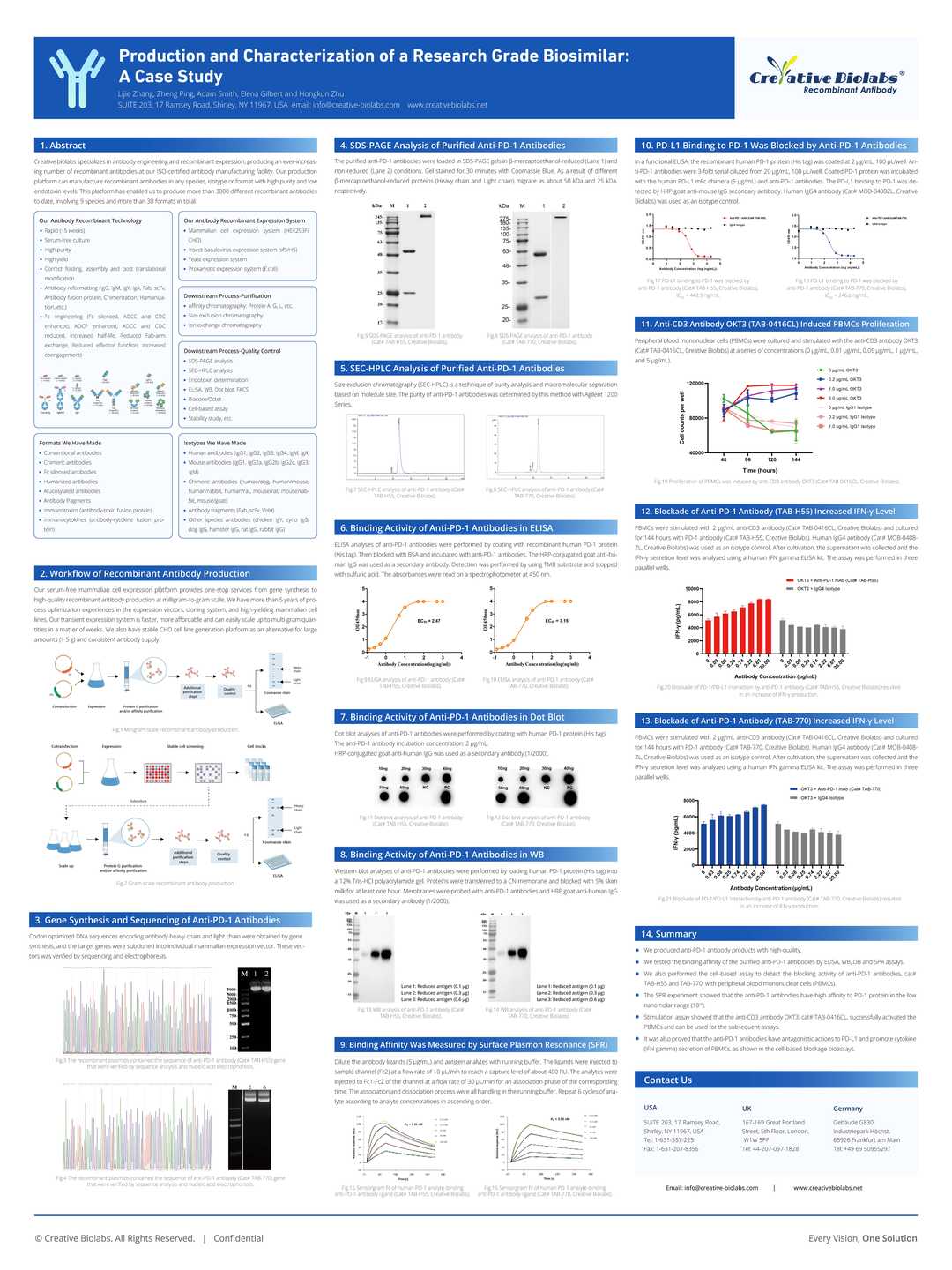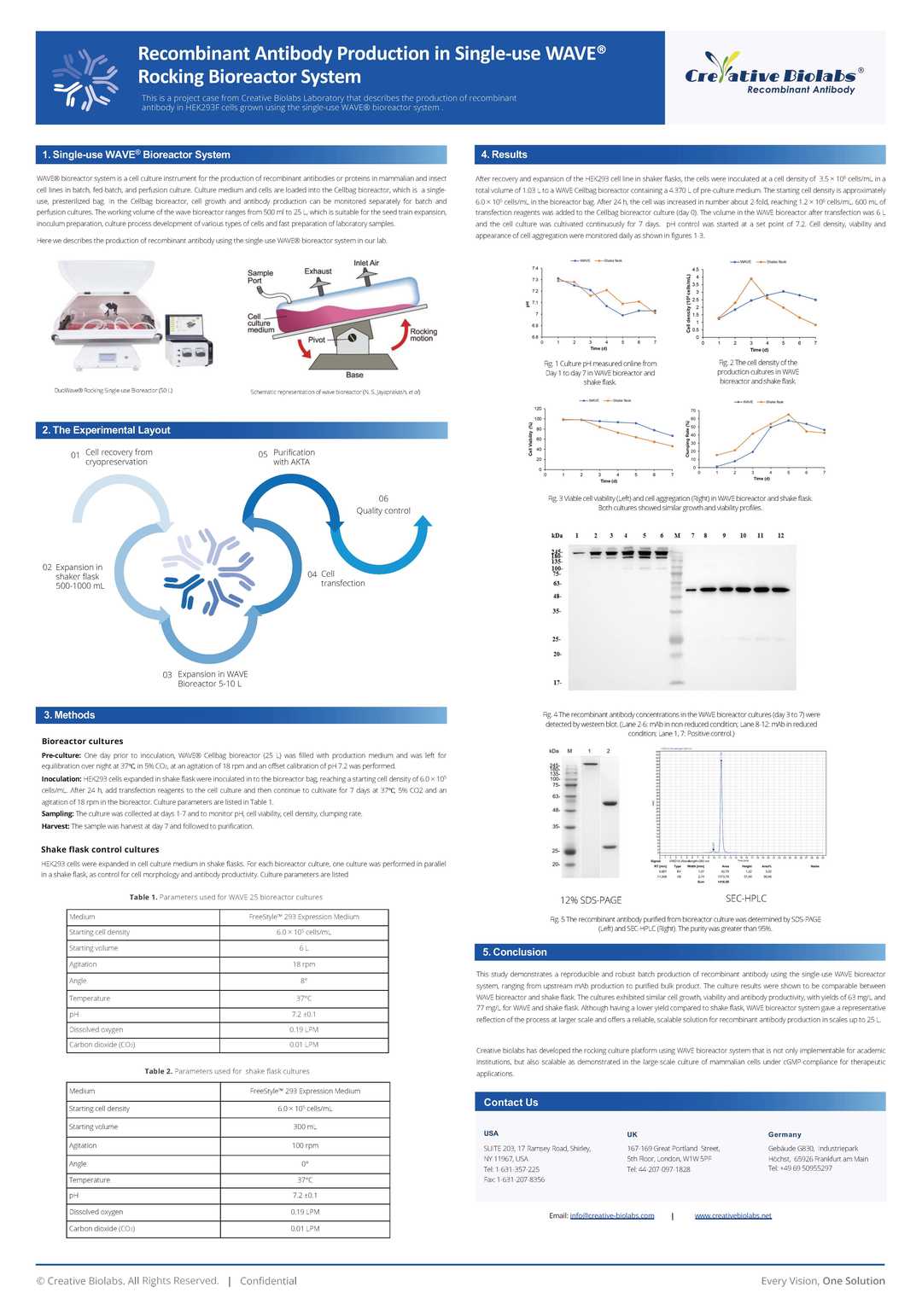Recombinant Rabbit Anti-Smarca4 Antibody (clone R07-4B7)
CAT#: VS3-FY1361
This product is a recombinant rabbit antibody that recognizes Smarca4. This antibody has been reported for use in Western Blot, Immunohistochemistry-Frozen, Immunohistochemistry-Paraffin, Immunocytochemistry, Immunofluorescence, Immunoprecipitation, Chromatin Immunoprecipitation. The clone R07-4B7 is specific for human, mouse, rat Smarca4. The antigen is mouse brg1 synthetic peptide.












Specifications
- Immunogen
- Mouse BRG1 Synthetic Peptide.
- Host Species
- Rabbit
- Type
- Rabbit IgG
- Specificity
- Human, Mouse, Rat Smarca4
- Species Reactivity
- Human, Mouse, Rat
- Clone
- R07-4B7
- Applications
- Western Blot, Immunohistochemistry-Frozen, Immunohistochemistry-Paraffin, Immunocytochemistry, Immunofluorescence, Immunoprecipitation, Chromatin Immunoprecipitation
- Conjugate
- Unconjugated
- MW
- Calculated MW: 181 kDa; Observed MW: 220 kDa
Product Property
- Purification
- Affinity Purified
- Purity
- >95% as determined by SDS-PAGE
- Buffer
- 50 mM Tris-Glycine, pH 7.4, 0.15 M NaCl, 40% glycerol, 0.05% BSA
- Preservative
- 0.01% Sodium azide
- Storage
- Centrifuge briefly prior to opening vial. Store at +4°C short term (1-2 weeks). Aliquot and store at -20°C long term. Avoid repeated freeze/thaw cycles.
Applications
- Application Notes
- Western Blot: 1/500-1/1000
Immunohistochemistry-Paraffin: 1/50-1/100
Immunofluorescence: 1/50-1/200
Immunoprecipitation: 1/20
Chromatin Immunoprecipitation: 1/20
Target
- Alternative Names
- SWI/SNF Related, Matrix Associated, Actin Dependent Regulator Of Chromatin, Subfamily A, Member 4; Mitotic Growth And Transcription Activator; ATP-Dependent Helicase SMARCA4; Global Transcription Activator Homologous Sequence; Sucrose Nonfermenting-Like 4; BRG1-Associated Factor 190A; Protein Brahma Homolog 1; BRM/SWI2-Related Gene 1; Homeotic Gene Regulator; Brahma Protein-Like 1; Nuclear Protein GRB1; Protein BRG-1; SNF2-Like 4; SNF2-Beta; BAF190A; SNF2L4
- Gene ID
- 6597
- UniProt ID
- P51532
- Sequence Similarities
- Belongs to the SNF2/RAD54 helicase family.
- Cellular Localization
- Nucleus
- Protein Refseq
- NP_001122316.1; NP_001122317.1; NP_001122318.1
- Function
- Involved in transcriptional activation and repression of select genes by chromatin remodeling (alteration of DNA-nucleosome topology). Component of SWI/SNF chromatin remodeling complexes that carry out key enzymatic activities, changing chromatin structure by altering DNA-histone contacts within a nucleosome in an ATP-dependent manner. Component of the CREST-BRG1 complex, a multiprotein complex that regulates promoter activation by orchestrating the calcium-dependent release of a repressor complex and the recruitment of an activator complex. In resting neurons, transcription of the c-FOS promoter is inhibited by SMARCA4-dependent recruitment of a phospho-RB1-HDAC repressor complex. Upon calcium influx, RB1 is dephosphorylated by calcineurin, which leads to release of the repressor complex. At the same time, there is increased recruitment of CREBBP to the promoter by a CREST-dependent mechanism, which leads to transcriptional activation. The CREST-BRG1 complex also binds to the NR2B promoter, and activity-dependent induction of NR2B expression involves the release of HDAC1 and recruitment of CREBBP. Belongs to the neural progenitors-specific chromatin remodeling complex (npBAF complex) and the neuron-specific chromatin remodeling complex (nBAF complex). During neural development, a switch from a stem/progenitor to a postmitotic chromatin remodeling mechanism occurs as neurons exit the cell cycle and become committed to their adult state. The transition from proliferating neural stem/progenitor cells to postmitotic neurons requires a switch in subunit composition of the npBAF and nBAF complexes. As neural progenitors exit mitosis and differentiate into neurons, npBAF complexes which contain ACTL6A/BAF53A and PHF10/BAF45A, are exchanged for homologous alternative ACTL6B/BAF53B and DPF1/BAF45B or DPF3/BAF45C subunits in neuron-specific complexes (nBAF). The npBAF complex is essential for the self-renewal/proliferative capacity of the multipotent neural stem cells. The nBAF complex along with CREST plays a role regulating the activity of genes essential for dendrite growth. SMARCA4/BAF190A may promote neural stem cell self-renewal/proliferation by enhancing Notch-dependent proliferative signals, while concurrently making the neural stem cell insensitive to SHH-dependent differentiating cues (By similarity).
Acts as a corepressor of ZEB1 to regulate E-cadherin transcription and is required for induction of epithelial-mesenchymal transition (EMT) by ZEB1. Binds via DLX1 to enhancers located in the intergenic region between DLX5 and DLX6 and this binding is stabilized by the long non-coding RNA (lncRNA) Evf2 (By similarity).
Binds to RNA in a promiscuous manner (By similarity).
Binding to RNAs including lncRNA Evf2 leads to inhibition of SMARCA4 ATPase and chromatin remodeling activities (By similarity).
Customer Review
There are currently no Customer reviews or questions for VS3-FY1361. Click the button above to contact us or submit your feedback about this product.
Submit Your Publication
Published with our product? Submit your paper and receive a 10% discount on your next order! Share your research to earn exclusive rewards.
Downloadable Resources
Download resources about recombinant antibody development and antibody engineering to boost your research.
Product Notes
This is a product of Creative Biolabs' Hi-Affi™ recombinant antibody portfolio, which has several benefits including:
• Increased sensitivity
• Confirmed specificity
• High repeatability
• Excellent batch-to-batch consistency
• Sustainable supply
• Animal-free production
See more details about Hi-Affi™ recombinant antibody benefits.
Datasheet
MSDS
COA
Certificate of Analysis LookupTo download a Certificate of Analysis, please enter a lot number in the search box below. Note: Certificate of Analysis not available for kit components.
Protocol & Troubleshooting
We have outlined the assay protocols, covering reagents, solutions, procedures, and troubleshooting tips for common issues in order to better assist clients in conducting experiments with our products. View the full list of Protocol & Troubleshooting.
Secondary Antibody
- CAT
- Product Name
Isotype Control
- CAT
- Product Name
See other products for "SMARCA4"
Select a product category from the dropdown menu below to view related products.
| CAT | Product Name | Application | Type |
|---|---|---|---|
| DrMAB-546 | Recombinant Human Anti-Human SMARCA4 Antibody Fab Fragment, clone D290 | IF, ELISA, IP-MS | Fab |
| CAT | Product Name | Application | Type |
|---|---|---|---|
| DrMAB-549 | Recombinant Human Anti-Human SMARCA4 Antibody, clone D503 | IF, ELISA, IP-MS | IgG |
| MOB-1488MZ | Recombinant Mouse Anti-Human SMARCA4 Antibody (clone CSH-02) | WB | Mouse antibody |
| FAMAB-1262CQ | Human Anti-SMARCA4 Recombinant Antibody (clone 4E5) | IP, WB, IF, IHC | Human IgG1 |
| VS3-QX1030 | Mouse Anti-SMARCA4 Recombinant Antibody (clone 6D7-F7-B6) | WB, IF, IP | Mouse IgG1 |
| VS13-YC1081 | Rabbit Anti-SMARCA4 Recombinant Antibody (VS13-YC1081) | WB, ICC, IF, IHC-P, IP | Rabbit IgG |
| CAT | Product Name | Application | Type |
|---|---|---|---|
| MOR-3328 | Hi-Affi™ Recombinant Rabbit Anti-SMARCA4 Monoclonal Antibody (DS3328AB) | ICC, IF, IHC-P, WB | IgG |
| MOR-0080-FY | Rabbit Anti-SMARCA4 Recombinant Antibody (clone AFY0051) | ICC, IHC-P, WB | Rabbit IgG |
| CAT | Product Name | Application | Type |
|---|---|---|---|
| VS-0424-XY239 | AbPlus™ Anti-SMARCA4 Magnetic Beads (D503) | IP-MS, Protein Purification |
| CAT | Product Name | Application | Type |
|---|---|---|---|
| VS-0325-XY2113 | Anti-SMARCA4 Immunohistochemistry Kit | IHC | |
| VS-0525-XY6731 | Anti-Mouse SMARCA4 Immunohistochemistry Kit | IHC | |
| VS-0525-XY6730 | Anti-Human SMARCA4 Immunohistochemistry Kit | IHC | |
| VS-0525-XY6732 | Anti-Rat SMARCA4 Immunohistochemistry Kit | IHC |
Popular Products

Application: IP, IF, FuncS, FC, Neut, ELISA, IHC

Application: Neut, ELISA, IF, IP, FuncS, FC, IHC

Application: Neut, ELISA, IF, IP, FuncS, FC, WB

Application: FC, IB, Block, Inhib, FuncS, ELISA, FACS, IP, IF

Application: ELISA, IHC, FC, IP, IF, FuncS

Application: ELISA, IHC, FC, IP, IF, FuncS

Application: ELISA, Neut

Application: ELISA, Inhib, FC, Neut

Application: FC

Application: ELISA, IHC, WB

Application: ELISA, Vaccine, FuncS

Application: ELISA, Inhib, FuncS

Application: EM, ELISA, ICC, IHC-Fr, IHC-P, WB
For research use only. Not intended for any clinical use. No products from Creative Biolabs may be resold, modified for resale or used to manufacture commercial products without prior written approval from Creative Biolabs.
This site is protected by reCAPTCHA and the Google Privacy Policy and Terms of Service apply.


























